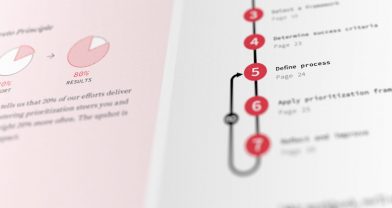The driving force moving marketing forward is not agencies. Not anymore. Their influence is waning, their role shifting from leadership to support. It’s not tech companies, either. As powerful as they’ve become, they have their own agendas (and, lately, their own headaches). Their role must also be a supporting one.
Only CMOs can lead our discipline forward—coordinating multiple agencies and vendors, guiding the way technology is used and, crucially, building new internal capacity. As a result, the caliber and capabilities of internal marketing teams have emerged as an important competitive battleground. What does the winning approach look like? What are the pitfalls? Where should you start? Let’s take a moment to pause and reflect.
- Changes within marketing departments are a reflection of changes in the way marketing is practiced. Econsultancy’s Ashley Friedlein has attempted to encapsulate these changes in what he calls the Modern Marketing Model, or 3M for short. The details of his model may not be perfect or universally true, but it’s hard to argue that marketing isn’t evolving. Or that new internal capabilities aren’t necessary.
- One specific driver for internal capability building: brands that have invested heavily in marketing technology. Now they’re struggling to figure out how to use it effectively.
- Just how widespread is this focus on building new muscle in-house? According to research from Digiday, 56% of brands plan to move more of their marketing in-house in 2018. And 69% already conduct over half of their marketing internally.
- One interesting development—as agencies shift into supporting roles, many have started to help their clients source talent for growing internal teams.
- Which roles are driving the most growth? According to research from Adobe and Econsultancy, the biggest opportunities for in-house capacity building are in content and experience management.

- Content might be leading the way, but choosing where to build capabilities should depend on your brand’s unique goals and challenges. For example, Anheuser-Busch InBev decided that the best way to meet their goals of trimming costs and increasing speed-to-market was to bring programmatic media buying and social content production in-house.
- On the other hand, Virgin Atlantic recently made some key internal creative hires in service of a different goal: sparking more creativity to fuel the launch of a new brand identity.
- Of course, the considerations here extend far beyond new hires. Ultimately, significant changes in people and process must be accompanied by a change in culture. Big legacy brands like Coca Cola are discovering that this is the hardest part.
- If you’re interested in deeper reading on this topic, Forrester’s Shar VonBoskirk recently released a three-part series on marketing talent transformation. The reports feature some concrete real-world examples, plus (we’re proud to report) some input from MC partners John Ounpuu and Peter Petralia.

